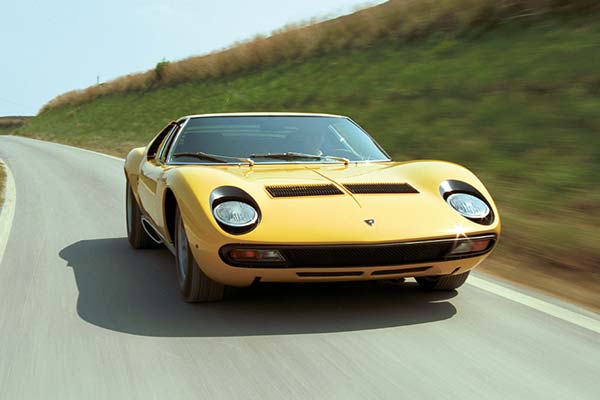Lamborghini Miura history
Over half a century after it was first launched, The Lamborghini Miura is still seen as the blueprint for the 21st century supercar.
Lamborghini Miura history – origins
The Lamborghini Miura wasn’t the first supercar or the first mid-engined car but the two concepts fused so successfully with this car. To the extent that over half a century after the Miura was first unveiled, the preferred supercar layout is still mid-engined.
Perhaps another reason the Miura legend burns so brightly is its part in the Lamborghini vs Ferrari rivalry. If Lamborghini’s first car the 350GT was a warning shot, following it up just 2 years later with the Miura was akin to a punch in Maranello’s face.
In the mid-sixties, the mid-engined layout was becoming popular for racing cars but was rare in road cars. With the Miura, Lamborghini beat arch-rival Ferrari to market with a mid-engined car by several years. Ferrari wouldn’t release a mid-engined road car until the 206GT in 1969 and even then the car wore the Dino badge, not the prancing horse. Rumour has it that Ferrari thought the mid-engined layout too challenging for non-professional drivers.
Lamborghini Miura – design
First unveiled at the 1965 Turin Motor Show, Lamborghini showed just a bare chassis with mid-mounted V12 engine, flaunting the car’s mid-engined credentials for all to see.
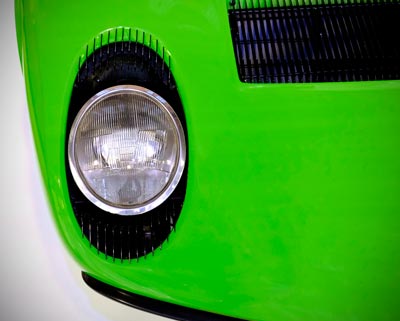
Early Miura’s featured these ‘eyelash’ air intakes for the front brakes
Lamborghini started taking orders for the Miura at the Turin Motor Show, before the bodywork had been designed. Bertone won the design job, handing the role on to their young hotshot designer Marcello Gandini, then just 25 years old.
Technology and performance
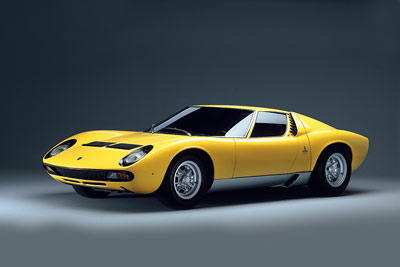
Lamborghini Miura P400
The Lamborghini Miura’s 3939cc V12, is mounted transversely ahead of the rear wheels. The first Miura, called the P400, P stood for ‘Posteriore’, where the engine was positioned and 400 for 4 litre, the size of the engine.
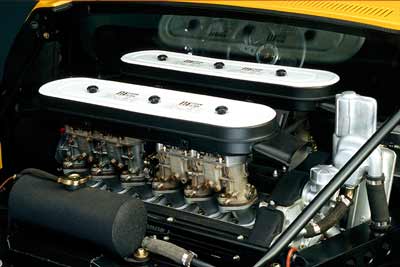
The engine produced 345bhp, enough shove to propel the P400 from 0-60 dash in just 7 seconds and on to a top speed of 171mph.
The manual 5 speed gearbox was also mounted transversely, underneath the engine, this allowed Gandini to design the Miura with short overhangs front and rear. Like the original Mini, both the gearbox and engine share the same oil (P400/P400SV only).
Which brings us to the car’s name. The name Miura, like so many of Lamborghini’s model names since 1966, came from a breed of Spanish fighting bull. The Miura bulls, reared originally by Don Eduardo Miura, were famous for their intelligence and being very difficult to fight.
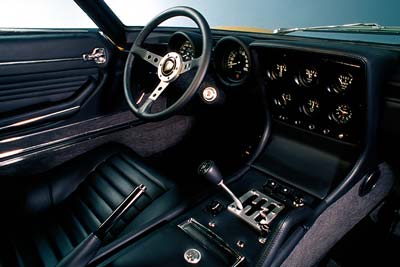
Models and Special Editions
The Lamborghini Miura P400 was followed up by the P400S, released in 1969.
The P400S brought few changes over the original car. Outside there was chrome trim around the windows and headlights. Inside a new overhead console, electric windows and optional air conditioning. Engine changes boosted power to 375bhp.
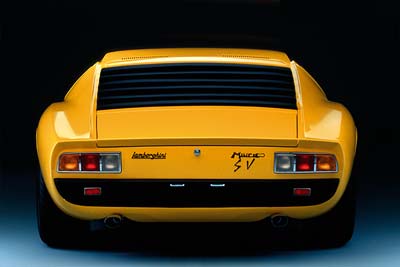
Lamborghini Miura SV – notice the wider arches and different rear lights
The final evolution of the Lamborghini Miura, the SV, arrived in 1971. SV stood for Sprint Veloce, changes to the cam timing and carburettors boosted the engine power to 385bhp. The gearbox also received a separate oil supply and the rear wheels now put power to the road via a limited slip differential. On the outside, the SV had wider arches concealed new 9-inch rear wheels. The front lights lost their distinctive eyelashes (except for one, Ferruccio Lamborghini’s own car) and a different tailight design.
There was also a couple of models that didn’t make production.
The Miura Jota was developed by (legendary) Lamborghini development engineer Bob Wallace, who dreamed of taking the Miura racing. Lamborghini engineers trimmed an amazing 350kg from the standard car, tuning the Jota’s engine to over 400bhp. A front spoiler answered one of the criticisms of the standard car, front end lift.
The motorsport programme didn’t go ahead (Lamborghini was famously opposed to taking his cars racing). The only Jota was sold and met a tragic end soon after. The car was unfortunately destroyed in an accident in 1972 on an unopened ring road in Brescia.
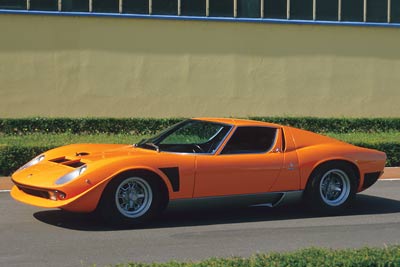
Lamborghini Miura Jota
A single Miura roadster was built by Bertone. Based on the P400, the car was first shown at the Brussels Auto Show in 1968. The car still exists and has been shown at The Pebble Beach Concours of Elegance.
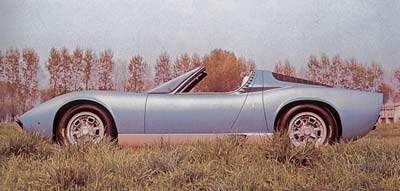
1968 Lamborghini Miura Roadster
Lamborghini Miura history – production ends
Lamborghini built around 764 Miuras between 1966 and 1971. The last Miura built, an SV, was delivered to the son of the car manufacturer Ferdinando Innocenti on 15th January 1973.
The Miura was replaced by the Lamborghini Countach LP400.
The Miura’s legacy is not how valuable examples of this car have become over the past half-century (at the time of writing, excellent examples change hands at over £1,000,000) or that it was the car that really put Lamborghini on the map but that it dared tread a mid-engined path few had dared before.
Lamborghini Miura technical data
Miura P400 (1966 to 1969)
| 0-62mph | 7 secs | Engine Capacity | 3929cc |
| Max Speed | 171 mph | Cylinders/C | 12 – Vee |
| Power | 345 bhp (at 7000rpm) | Layout | Mid-RWD |
| Torque | 262 lb ft | Transmission | 5 speed manual |
| Weight | 1125kg (dry) |
———————————————————————————————————————————————————-
Miura P400S (1968 to 1971)
| 0-62mph | 6.7 secs | Engine Capacity | 3929cc |
| Max Speed | 171 mph | Cylinders/C | 12 – Vee |
| Power | 375 bhp (at 7700rpm) | Layout | Mid-RWD |
| Torque | 286 lb ft | Transmission | 5 speed manual |
| Weight | 1298kg (dry) |
———————————————————————————————————————————————————-
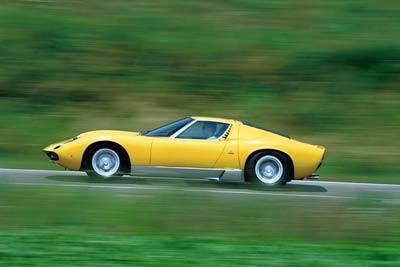
Lamborghini Miura P400 SV
Miura P400SV (1971 to 1973)
| 0-62mph | 6.7 secs | Engine Capacity | 3929cc |
| Max Speed | 171 mph | Cylinders/C | 12 – Vee |
| Power | 385 bhp (at 7700rpm) | Layout | Mid-RWD |
| Torque | 286 lb ft | Transmission | 5 speed manual |
| Weight | 1298kg (dry) |



